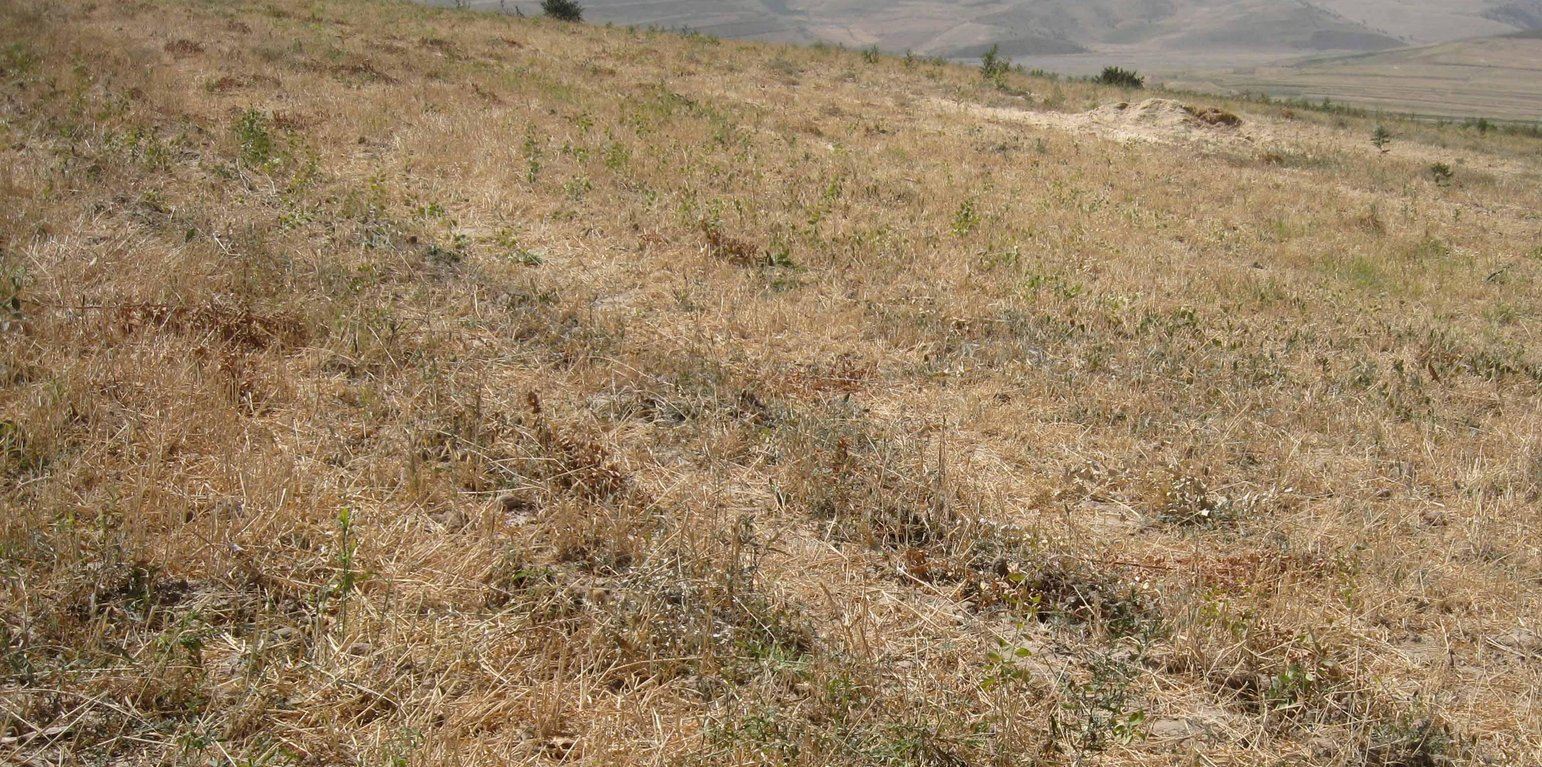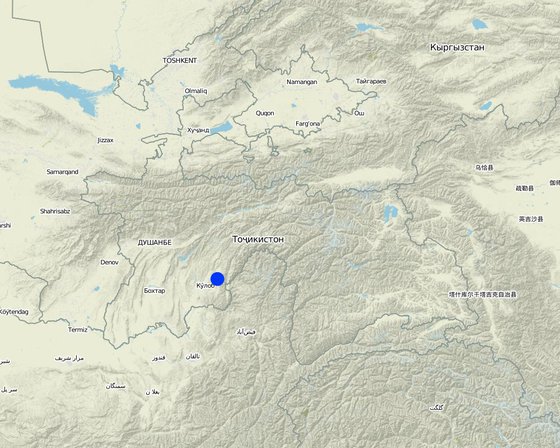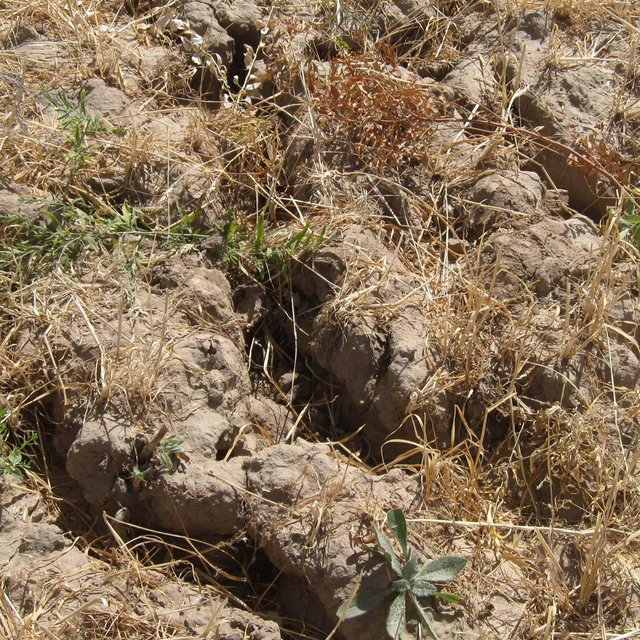



The rainfed crop of the farmer sizes around a hectare. He owns the crop since seven years and switches between chickpea and wheat every year. When he started to cultivate, soil properties were good, he did not use fertilizer. Because of the years of ploughing, the soil lost nutrients and moisture. The more rill building and slope instability is severe currently. The plot is over one hectare because it includes a narrow vegetation strip between his and the neighbours crop. The plot, as all the other crops are grazed by livestock, after harvest.
Purpose of the Technology: Chickpea cropping generates a satisfactory yield, whereas wheat production is rather variable and low. Nevertheless the farmer would not change the crop type because the main purpose is to get straw for feeding his cows. The farmer has over three hectares in total. Even though he claims the benefit to be low comparing to the input, he is content as long he can feed his family.
Establishment / maintenance activities and inputs: Ploughing, sowing and then harvesting were part of the establishment phase. The same activities count for maintenance. But as soil is gradually washed away, fertilizing became crucial. The farmer does not control and protect the crop from wild animals and grazing herds.
Natural / human environment: The crop lies on a foot slope not far from the riverbed. Neighbouring cultivations are of the same crop type, chickpea, wheat and food grain. It is less than one kilometre away from the farmers home in Doshmand village. Access to services is rather low, especially in winter, because of the bad condition of the road. Doctor, middle and higher school grades and market are in the village below.

Location: Muminabad, Khatlon, Tajikistan, Tajikistan
No. of Technology sites analysed:
Spread of the Technology: evenly spread over an area (approx. < 0.1 km2 (10 ha))
Date of implementation:
Type of introduction





Technical specificationsContour lined plot, with a vegetation strip of < 1m width, between this and the underneath plot. A lot of rills visible.
Location: Doshmand, Chukurak Watershed. Muminabad, Khatlon, Tajikistan Main technical functions: control of concentrated runoff: drain / divert, improvement of surface structure (crusting, sealing), stabilisation of soil (eg by tree roots against land slides), increase in organic matter, increase of infiltration Secondary technical functions: control of concentrated runoff: impede / retard, improvement of ground cover, increase of surface roughness, improvement of topsoil structure (compaction), improvement of subsoil structure (hardpan), increase in nutrient availability (supply, recycling,…), increase / maintain water stored in soil |
|||||||||||
| Specify input | Unit | Quantity | Costs per Unit (Somoni) | Total costs per input (Somoni) | % of costs borne by land users |
| Labour | |||||
| Sowing | Person days | 0.25 | 12.4 | 3.1 | 100.0 |
| Applying fertilizer | Person days | 0.25 | 12.4 | 3.1 | 100.0 |
| Cutting wheat | Person days | 18.0 | 12.422 | 223.6 | 100.0 |
| Plowing | Person days | 0.4375 | 12.4 | 5.42 | 100.0 |
| Equipment | |||||
| Machine use | Hours | 3.5 | 5.914 | 20.7 | 100.0 |
| Petrol | Liters | 40.0 | 1.1375 | 45.5 | 100.0 |
| Plant material | |||||
| Seeds | 150.0 | 0.414 | 62.1 | ||
| Fertilizers and biocides | |||||
| Fertilizer | Bucks | 2.0 | 31.05 | 62.1 | 100.0 |
| Total costs for establishment of the Technology | 425.62 | ||||
demand on fertilizers is increasing
gradually increasing
Only on long term according to the farmer
Many rills